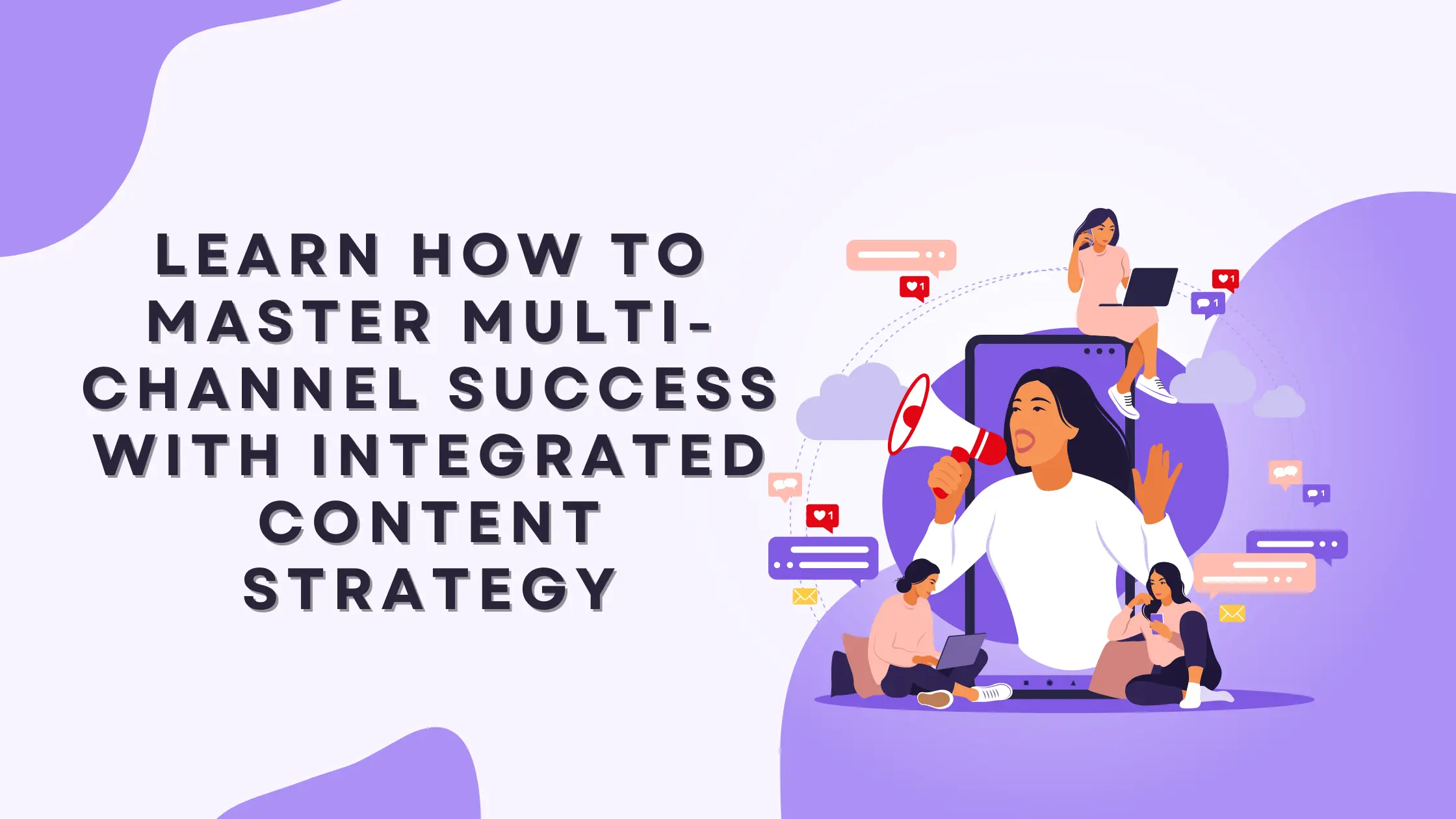In today’s fast-paced digital landscape, having a well-crafted integrated content strategy is no longer optional—it’s essential. This guide will walk you through everything you need to know to develop a cohesive and powerful strategy that resonates with your audience and drives measurable results.
What is an Integrated Content Strategy?
An integrated content strategy involves the deliberate coordination of various communication channels to deliver a consistent and unified message. This approach ensures that every piece of content, whether it’s a blog post, social media update, or email campaign, works in harmony to support your brand’s overarching goals.
Integrated content marketing is not just about sharing content across different platforms—it’s about crafting a coherent narrative that aligns with your brand’s identity and resonates with your audience. By doing so, you can maximize your reach, improve engagement, and ultimately, drive more conversions.
Why is Integrated Content Strategy Important?
1. Consistency Across Channels
Maintaining a consistent brand voice across all channels helps to build trust and recognition among your audience. When your messaging is uniform, your brand becomes more recognizable, making it easier for consumers to connect with you.
2. Increased ROI
By delivering a cohesive message across multiple platforms, you can reach a wider audience without the need to create entirely new content for each channel. This efficiency not only saves time but also reduces costs, leading to a higher return on investment (ROI).
3. Enhanced Audience Engagement
Different people prefer different platforms. Some might be more active on social media, while others prefer email newsletters. An integrated content strategy allows you to meet your audience where they are, increasing the likelihood of engagement.
4. Improved Brand Awareness
Consistent messaging across channels helps to reinforce your brand’s presence, making it more likely that consumers will remember you when they’re ready to make a purchase.
How to Develop an Integrated Content Strategy
1. Define Your Goals
Before you start creating content, it’s crucial to define what you hope to achieve. Are you looking to increase brand awareness, generate leads, or boost sales? Whatever your goals are, make sure they are SMART (Specific, Measurable, Achievable, Relevant, and Time-bound).
Example: Instead of saying, “We want to increase website traffic,” specify, “We aim to increase website traffic by 20% over the next six months through targeted content marketing efforts.
2. Identify Your Target Audience
Understanding your audience is key to creating content that resonates. Develop detailed buyer personas that include demographic information, pain points, and preferred communication channels. This will help you tailor your content to meet the specific needs of your audience.
3. Craft Your Unique Value Proposition
Your unique value proposition (UVP) is what sets you apart from your competitors. Clearly articulate what makes your brand unique and why customers should choose you over others. This message should be consistent across all your content and channels.
4. Choose the Right Channels
Not all channels will be relevant to your audience. Focus your efforts on the platforms where your target audience is most active. For instance, if your audience consists primarily of professionals, LinkedIn might be a more effective channel than Instagram.
5. Develop a Content Calendar
A content calendar helps you plan and organize your content efforts. It ensures that you consistently deliver content that aligns with your strategy and goals. Use tools like Planable to manage your content calendar, track performance, and make real-time adjustments.
Creating Impactful Content
1. Content for Every Stage of the Buyer’s Journey
Your content should cater to every stage of the buyer’s journey—from awareness to consideration to decision-making.
- Awareness Stage: Blog posts, infographics, and social media updates that introduce your brand and address common pain points.
- Consideration Stage: White papers, webinars, and case studies that offer in-depth information and demonstrate your expertise.
- Decision Stage: Testimonials, product demos, and free trials that help close the deal.
2. Leverage Multiple Content Formats
Experiment with different content formats to keep your audience engaged. This could include videos, podcasts, infographics, and interactive content. The key is to present your message in a way that resonates with your audience’s preferences.
3. Optimize for SEO
Ensure that your content is optimized for search engines. Use relevant keywords, meta descriptions, and alt text for images to improve your content’s visibility. For instance, consistently include the main keyword integrated content strategy throughout your content.
4. Monitor and Measure Performance
Use analytics tools like Google Analytics to track the performance of your content. Key metrics to monitor include website traffic, conversion rates, and social media engagement. Regularly reviewing these metrics will help you adjust your strategy to optimize results.
5. Incorporate Feedback and Iterate
Feedback is essential for improving your content strategy. Use A/B testing to experiment with different content approaches and gather insights. Incorporate this feedback into your strategy to ensure continuous improvement.
Key Insights and Trends for 2024
As we move through 2024, several key trends are shaping the content marketing landscape. Here’s a snapshot of the most impactful trends:
| Trend | Insight |
|---|---|
| AI in Content Creation | AI tools are increasingly being used to create personalized content at scale, optimizing everything from meta tags to video content. |
| Video Content Dominance | Short-form videos on platforms like TikTok, Instagram Reels, and YouTube Shorts are driving higher engagement rates than other formats. |
| Trust and Authenticity | With growing skepticism towards AI-generated content, brands must focus on building trust through authentic storytelling and transparent communication. |
| Data-Driven Personalization | Leveraging data to create personalized content experiences is critical for meeting consumer expectations in 2024. |
| Voice Search Optimization | With the rise of smart speakers, optimizing content for voice search is becoming increasingly important. |
Conclusion
An integrated content strategy is a powerful tool for any brand looking to maximize its impact across multiple channels. By delivering a consistent and unified message, you can increase brand recognition, improve audience engagement, and drive higher ROI. Follow the steps outlined in this guide to create a strategy that not only meets your business goals but also resonates with your audience.
Ready to take your content marketing to the next level? Start by defining your goals, understanding your audience, and crafting a cohesive message. With a solid integrated content strategy, your brand can achieve long-term success.







